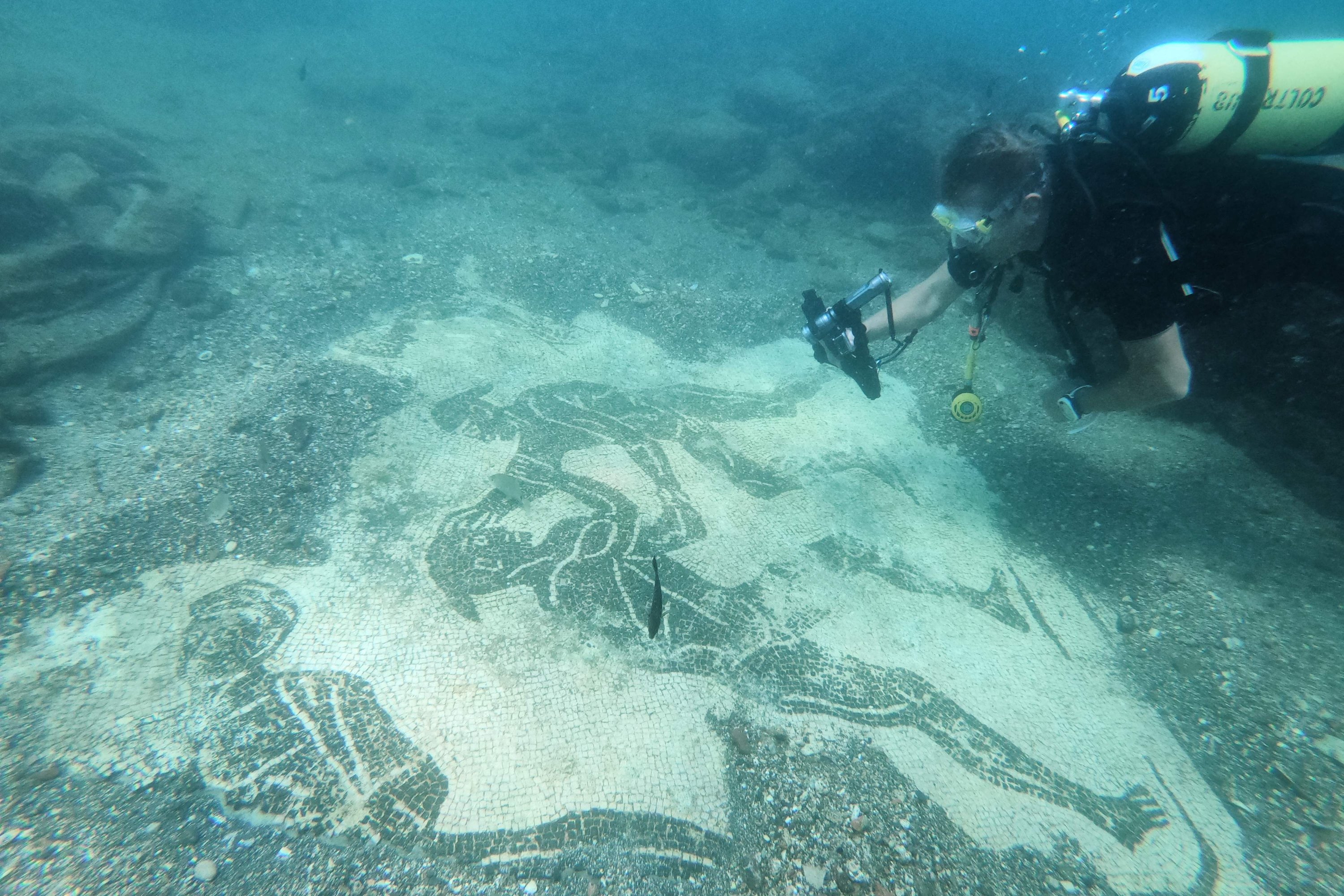Portasanta marble column, a new discovery at Baia (Naumacos)Advertisement
The submerged spa of Baia has long attracted scuba divers and snorkellers to Italy’s Bay of Naples, but last week staff at the underwater park discovered a previously unsuspected part of the site that had remained unseen since ancient Roman times.
The divers noticed pieces of masonry between seagrass beds north of an already excavated area called Terme del Lacus, and on investigation have found “new columns, new floors – a whole new block to play in!”

Then on Easter Monday (10 April) in the centre of the Terme del Lacus itself, the park’s divers were excited to find a new mosaic, described as a “psychedelic intertwining of geometric lines made with coloured tiles”. This has yet to be fully revealed.
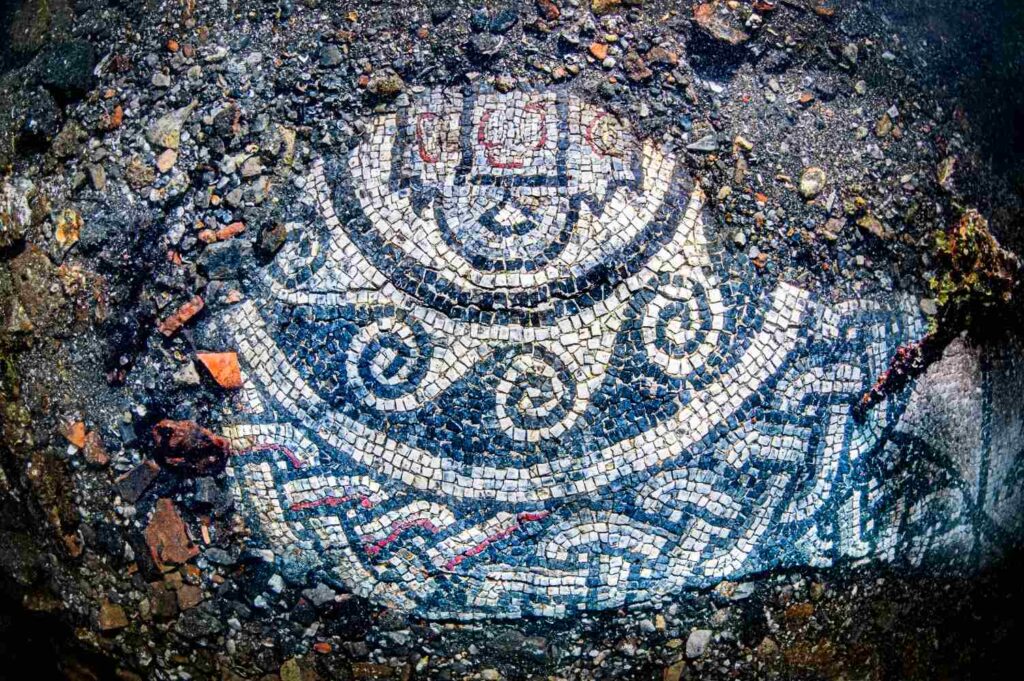 Detail from mosaic discovered days ago in Terme dell Lacus (Edoardo Ruspantini)
Detail from mosaic discovered days ago in Terme dell Lacus (Edoardo Ruspantini)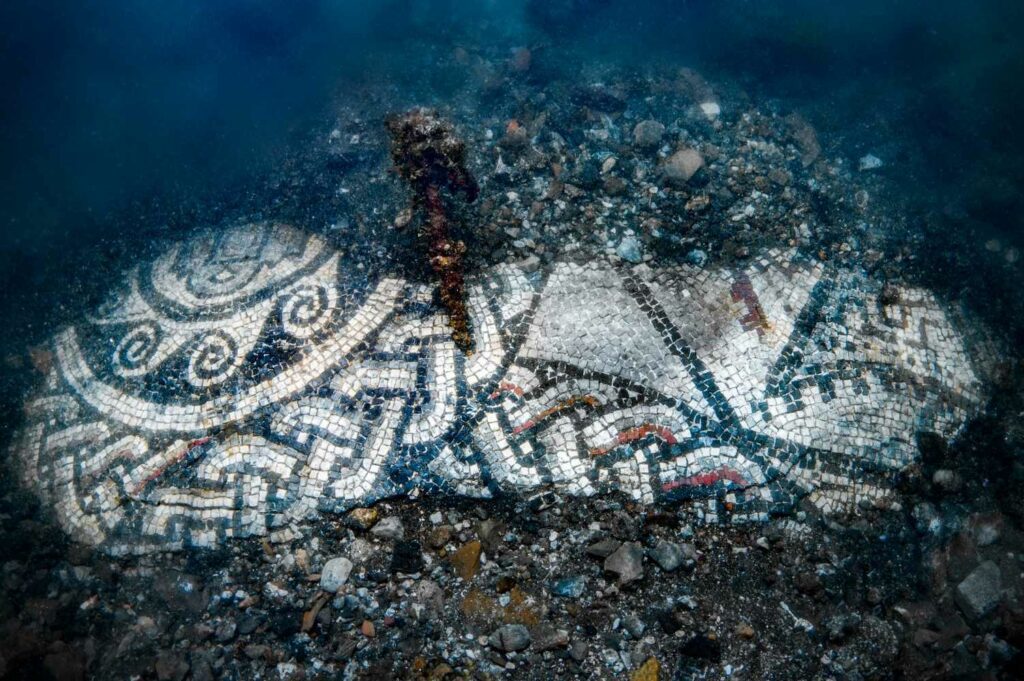 The mosaic revealed so far (Edoardo Ruspantini)
The mosaic revealed so far (Edoardo Ruspantini)
Baia was a fashionable thermal resort for Rome’s elite over a period of six centuries, between 100 BC and 500 AD, with emperors such as Julius Caesar, Nero, Caligula and Hadrian staying in villas there.
However, the volcanic activity that created its hot springs also caused the subsidence that gradually sealed its fate. Once described as a “vortex of luxury” and “harbour of vice”, the sunken complex lies just off Pozzuoli.
Stone colonnade
Surveys of the newly discovered area are being carried out by Naumacos Underwater Archaeology & Technology and Campi Flegrei Archaeological Park, which supervises the site.
The two organisations have long collaborated in investigating Baia and their divers are now documenting the remains visible on the seabed while trying to establish how far the area extends beyond the 80sq m already observed.
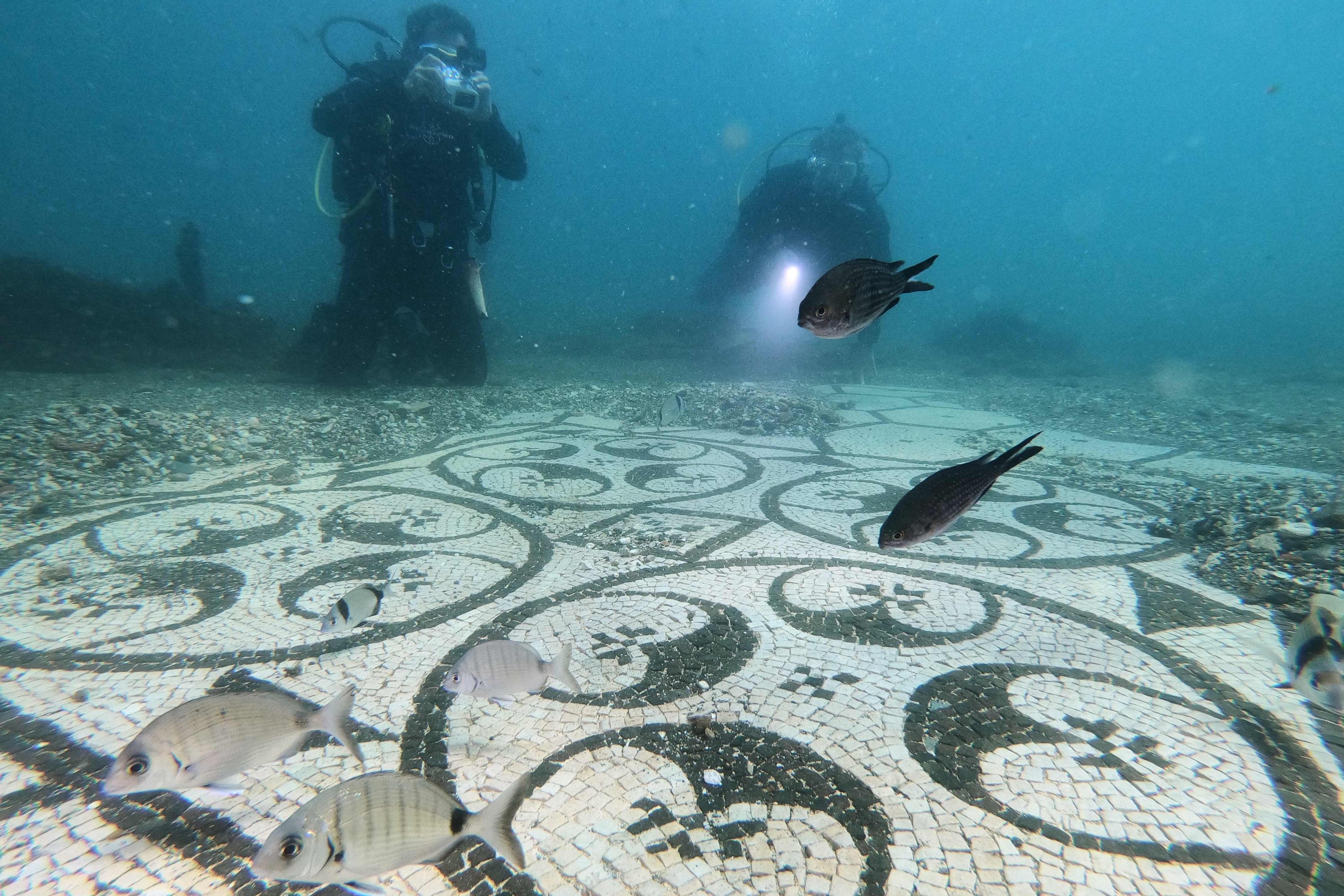
A partially collapsed stone colonnade has already been located, and among a number of columns is one made of precious Portasanta marble imported from the Greek island of Chios. Although broken, it is reported to have been well-preserved.
A large section of opus sectile flooring, in which cut materials are inlaid to form a design or picture, has also been identified. This was rendered in marble using alternate white and grey-black and Portasanta pink slabs, which dates the floor to the Baia’s later period of construction. The remains are thought to have formed part of Roman villas.
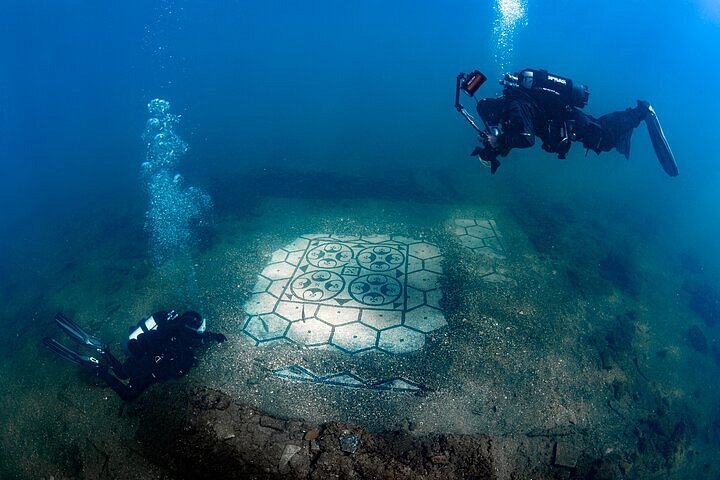
“Maybe we should have expected this, given that a statue of Apollo was found in this area a few years ago,” commented Campi Flegrei. The broken and headless statue discovered in 2013 has since been restored at the Central Institute for Restoration in Rome and was only recently identified as representing the sun god.

Visiting divers can book dives at the Campi Flegrei Archaeological Park Diving Centre in Pozzuoli. Two dives cost 65 euros.
